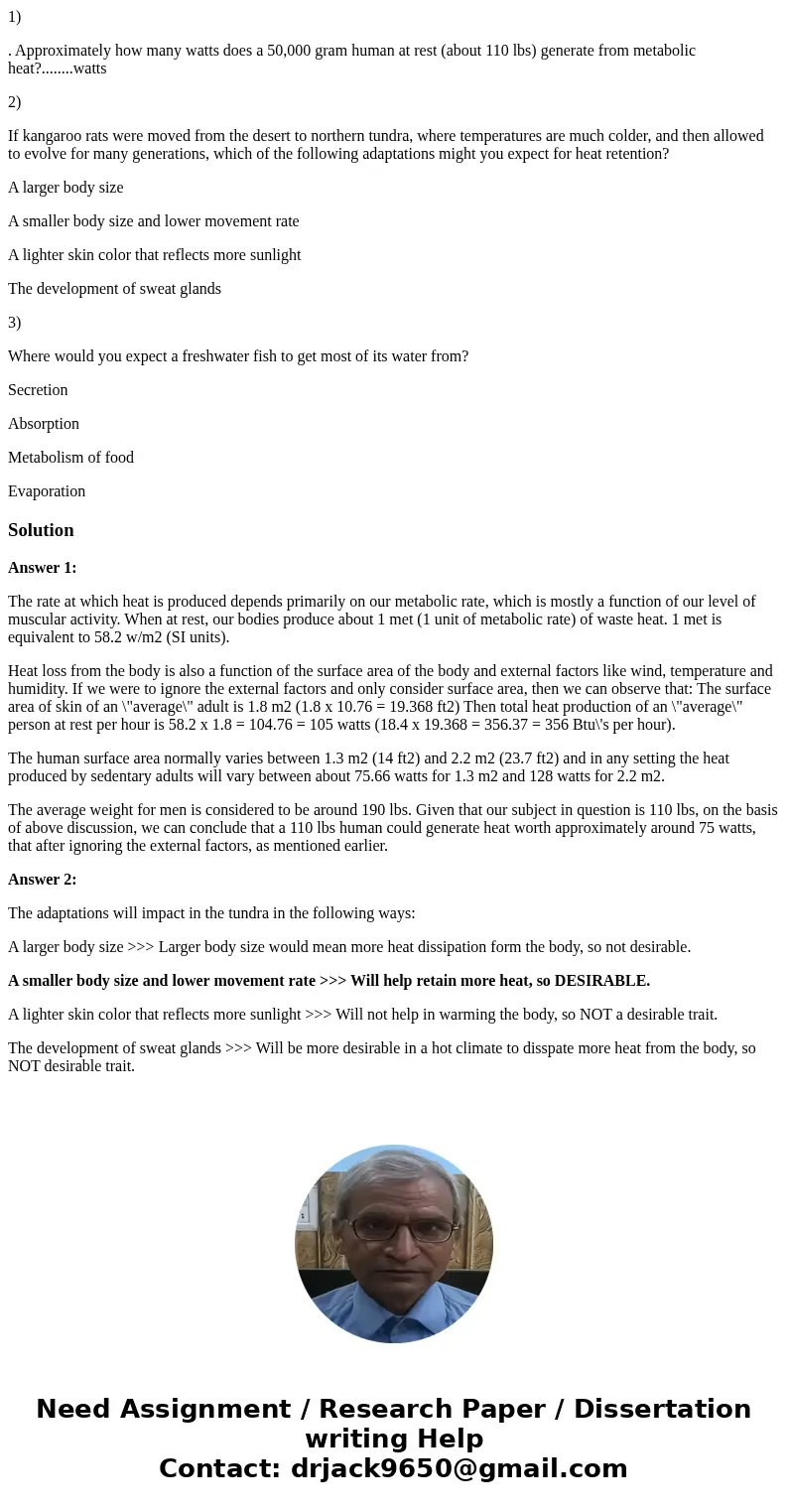1 Approximately how many watts does a 50000 gram human at r
1)
. Approximately how many watts does a 50,000 gram human at rest (about 110 lbs) generate from metabolic heat?........watts
2)
If kangaroo rats were moved from the desert to northern tundra, where temperatures are much colder, and then allowed to evolve for many generations, which of the following adaptations might you expect for heat retention?
A larger body size
A smaller body size and lower movement rate
A lighter skin color that reflects more sunlight
The development of sweat glands
3)
Where would you expect a freshwater fish to get most of its water from?
Secretion
Absorption
Metabolism of food
Evaporation
Solution
Answer 1:
The rate at which heat is produced depends primarily on our metabolic rate, which is mostly a function of our level of muscular activity. When at rest, our bodies produce about 1 met (1 unit of metabolic rate) of waste heat. 1 met is equivalent to 58.2 w/m2 (SI units).
Heat loss from the body is also a function of the surface area of the body and external factors like wind, temperature and humidity. If we were to ignore the external factors and only consider surface area, then we can observe that: The surface area of skin of an \"average\" adult is 1.8 m2 (1.8 x 10.76 = 19.368 ft2) Then total heat production of an \"average\" person at rest per hour is 58.2 x 1.8 = 104.76 = 105 watts (18.4 x 19.368 = 356.37 = 356 Btu\'s per hour).
The human surface area normally varies between 1.3 m2 (14 ft2) and 2.2 m2 (23.7 ft2) and in any setting the heat produced by sedentary adults will vary between about 75.66 watts for 1.3 m2 and 128 watts for 2.2 m2.
The average weight for men is considered to be around 190 lbs. Given that our subject in question is 110 lbs, on the basis of above discussion, we can conclude that a 110 lbs human could generate heat worth approximately around 75 watts, that after ignoring the external factors, as mentioned earlier.
Answer 2:
The adaptations will impact in the tundra in the following ways:
A larger body size >>> Larger body size would mean more heat dissipation form the body, so not desirable.
A smaller body size and lower movement rate >>> Will help retain more heat, so DESIRABLE.
A lighter skin color that reflects more sunlight >>> Will not help in warming the body, so NOT a desirable trait.
The development of sweat glands >>> Will be more desirable in a hot climate to disspate more heat from the body, so NOT desirable trait.

 Homework Sourse
Homework Sourse